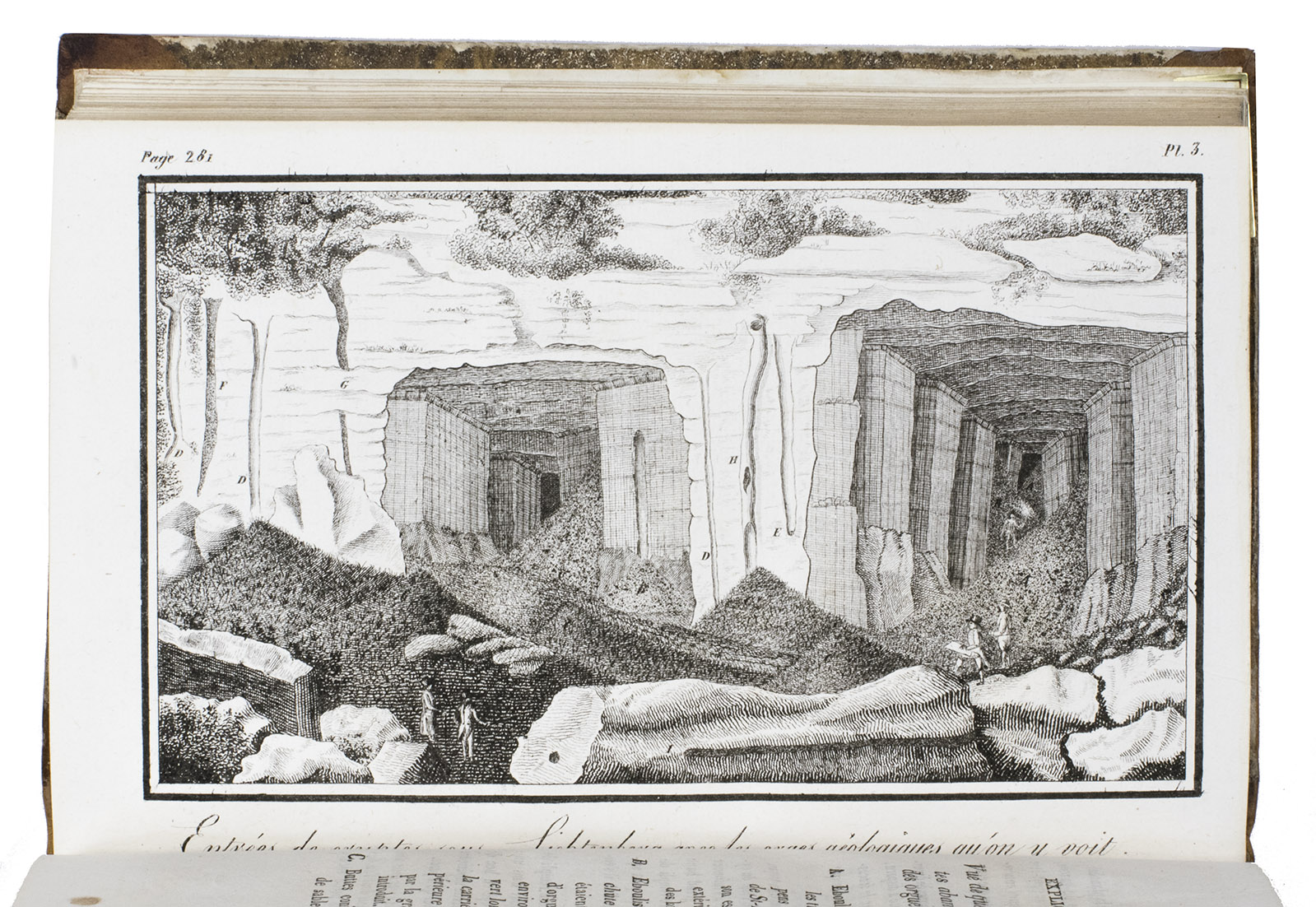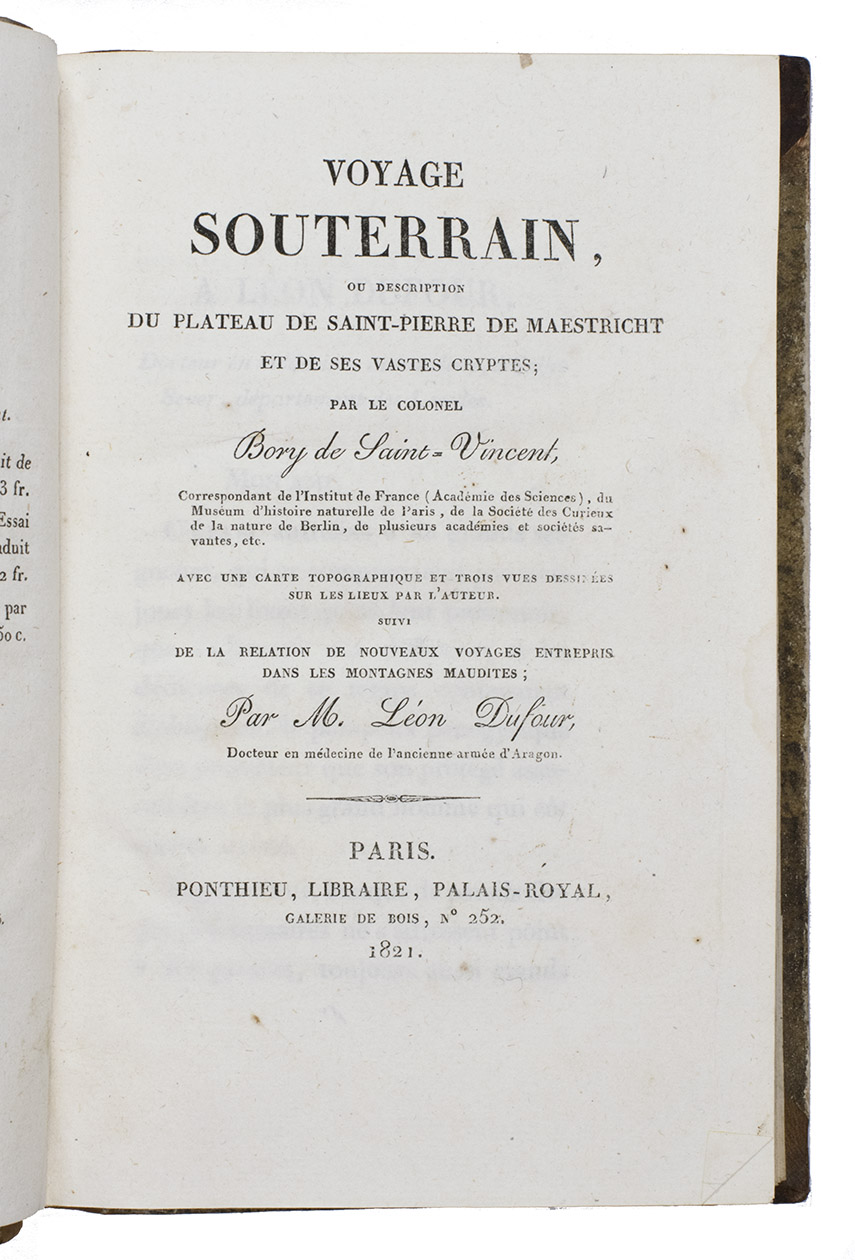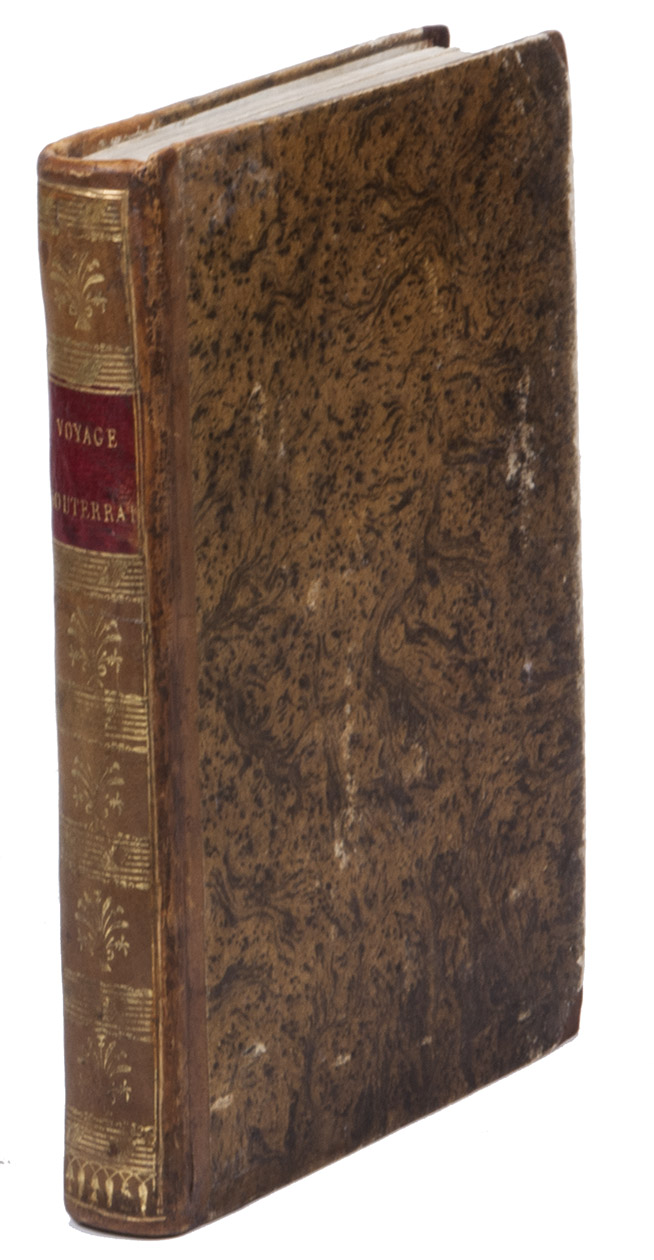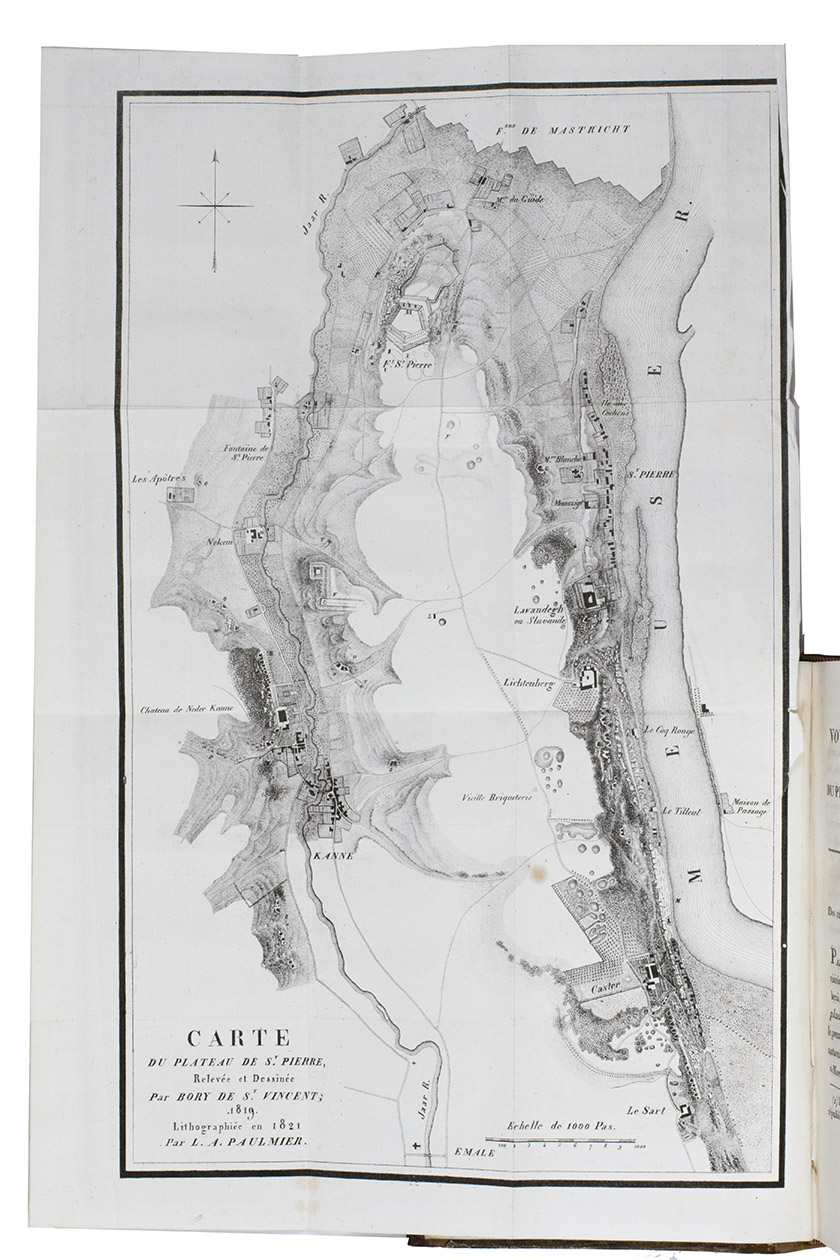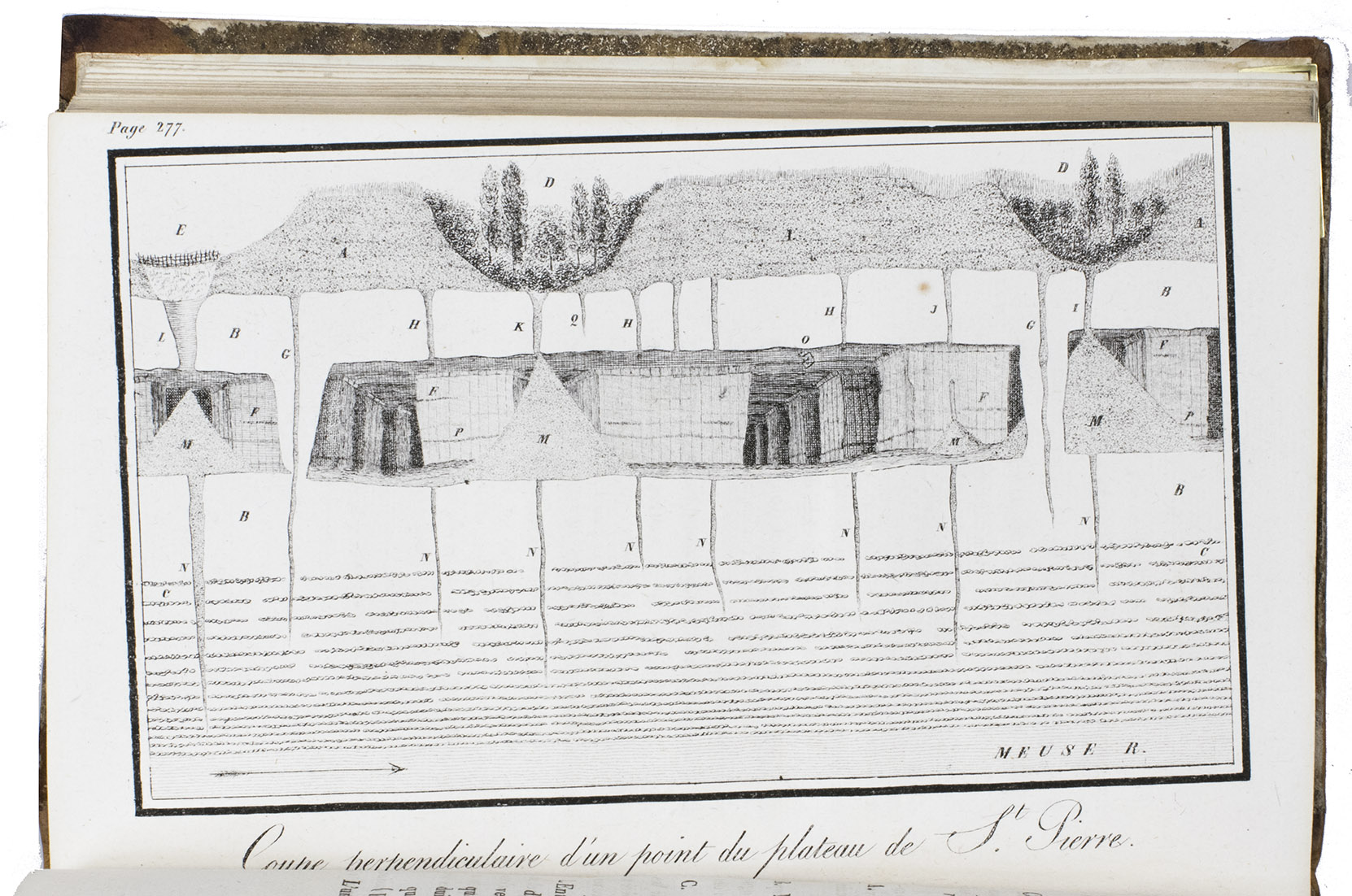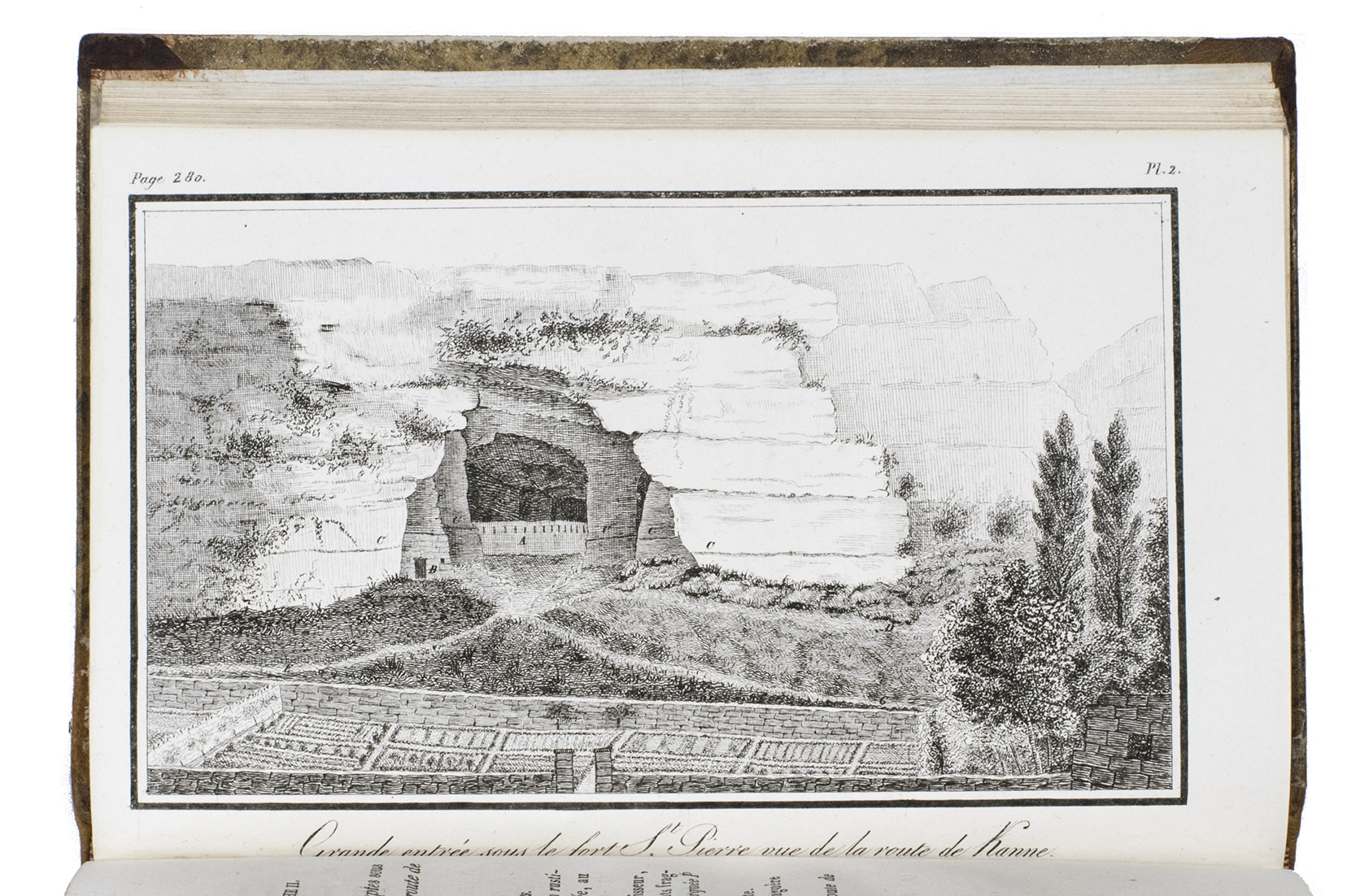BORY DE SAINT VINCENT, Jean Baptiste Geneviève Marcellin and Léon DUFOUR.
Voyage souterrain, ou description du Plateau de Saint-Pierre de Maestricht et de ses vastes cryptes, par le colonel Bory de Saint-Vincent; suivi de la relation de nouveaux voyages entrepris dans les Montagnes maudites; par Léon Dufour.
Paris, Ponthieu, 1821. 8vo. With a folding lithographed map of Mount Saint Peter in Maastricht, lithographed by L.A. Paulmier after drawings by the author, and 3 full-page lithographed views. Contemporary gold tooled quarter brown calf. [4], 381, [1 blank] pp.
€ 1,950
Rare first and only edition of a geological and botanical work describing the caves, quarries, and plants of Mount Saint Peter (St. Pietersberg) at Maastricht, the Netherlands. The work discusses the history of the region when it was still under water, the Mosasaurus fossils, the history of human activity on the mountain, the types of stone and geological structures that can be found there, and the different plants that grow there. The plates show the underground quarries. The last part of the books includes three letters by naturalist Léon Dufour (1780-1865) describing several of his mountain expeditions for botanical research.
Jean Baptiste Geneviève Marcellin Bory de Saint-Vincent (1778-1846) was a French naturalist and botanist. He joined a scientific expedition to Australia, which was led by Nicolas Baudin (1754-1803), as the chief botanist in 1799. However, due to a conflict with Baudin he left the ship at the Cape of Good Hope and explored the islands in the African Sea. He was the first to write a scientific description of Piton de la fournaise, the active volcano in Réunion. One of the craters is still named after him. After returning to France in 1802, he joined Napoleon's army and fought for him for several years. After Napoleon was exiled, Bory was also banished, and travelled throughout western Europe with a fake passport. He likely also visited the Mount of Saint Peter during this time. The edges and corners of the boards are scuffed, the boards are somewhat rubbed, a small portion of the back joint has cracked. A small tear in the inner margin of the plate, barely affecting the image, a hole in the outer margin of page 79, not affecting any text, the work is internally very clean and with wide margins. Overall in good condition. Bodel Nijenhuis 925; Quérard I, p. 422; not in Sinkankas.
Related Subjects:
